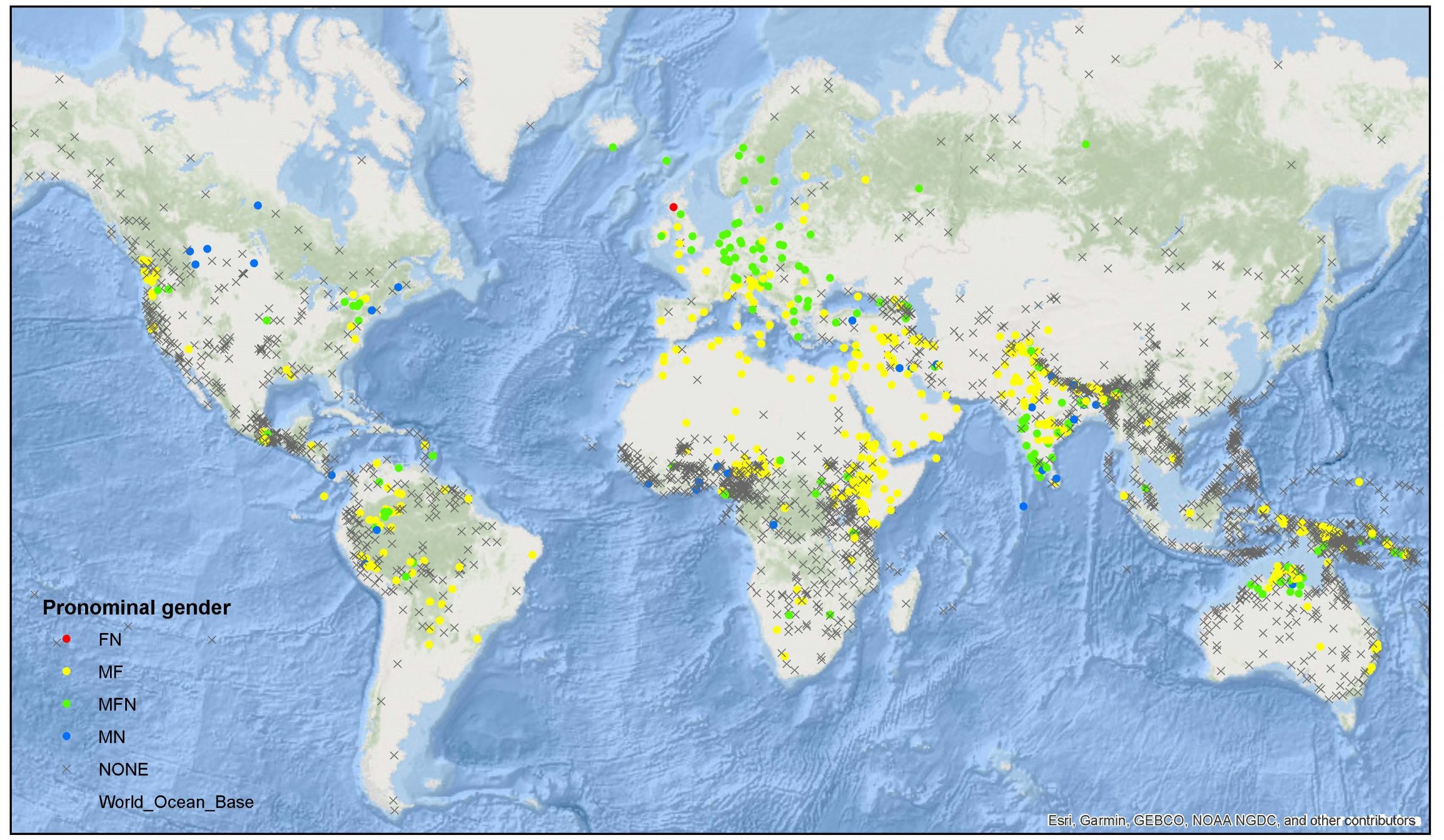by Gerd Carling

Pronouns are fun. They are important, too. Think for a second about what language would look like without pronouns. Every time you use it, he, she, someone, everyone, you would have been forced to repeat the nouns or names of people you refer to: “Where is Gerd’s handbag? Gerd’s handbag has disappeared! Can … (naming everyone name in the house) tell Gerd where Gerd’s handbag is. … (naming everyone in the house) must have taken Gerd’s handbag…” (You understand the problem now, I guess).
All languages have pronouns. As is evident from the hypothetical example above, they replace nouns in therefore fill an important function in speech. Pronouns build systems and pronominal systems worldwide can be considerably diverse and highly complex. We may think of them as reflexes of patterns of our culture, mirroring important functions of our social lives and the ways in which we organize our societies. However, to what extent do they really reflect our culture, social lives, and our communication habits? Is it possible that we just inherit our pronominal systems over generations and cannot do anything to change them, how much we try? It is an interesting question.
The most important characteristics of pronominal systems worldwide is the distinction of person. The second most important distinction is number. This means that most systems have forms for I, you, he/she/it, we, you (pl.), and they. These six basic forms can be combined into many different variants, including
- I+I (two persons saying something at the same time)
- I+you (I and you included)
- I+s/he (I and a third person included)
- you+you (two second persons included)
- you+s/he (you and a third person included)
- s/he+s/he (two third persons)
Even with these, combinations, some systems are very minimalistic, whereas others build up a rich system with many distinctions.
Pronoun system of Sanuma (Yanomami, Brazil/Venezuela):
| sa | I | sama | I + I, I + s/he |
| wa | you | ma | I+you, you+you, you+s/he |
One way to build a richer system is to increase the numbers (singular and plural), for instance with a dual (including two people, using any of the combinations above), a paral (two people forming a natural pair, such as spouse or twins), or a paucal (a few people).
Another frequent distinction is gender. Gender is normally marked on the third person (it is very unusual to mark gender on the first person, but not on the third). Gender may include a distinction between masculine/feminine, human/non-human, or animate/inanimate. Around 20% of the world’s languages make this distinction in their pronominal system, including languages of the Indo-European family.
Pronoun system of Tocharian A and B (Indo-European, extinct, Central Asia):
| A masc. näṣ, fem. ñuk B ñäś | I | A was B wes | we |
| A tu B twe | you | A yas B yes | you |
| B wene | we two (pair) | B yene | you two (pair) |
Many of the world’s languages distinguish inclusiveness in their system. This means that they use different forms for ‘we’ (dual or plural) if the hearer is included or not.
Pronouns system of Motuna (Buin, Papua New Guinea):
| nee | I | nee | we (including hearer) |
| noni | we (excluding hearer) | ||
| ro | you | ree | you (pl.) |
Some languages, again, mark the social status or character of the person in their system. Here, the most well known language is probably Japanese, which makes different distinctions depending on social structure. These forms have come to play an important role in virtual forms of the language, such as in computer games and anime.
Japanese forms for ‘I’ in the phrase “I am a …” in virtual language:
| Boku da | Young boy |
| Ore da | Rough man |
| Washi ja | Older, wise man |
| Jibun de arimasu | Soldier |
| Wate ya | Person from Osaka |
| Sessha de gozaru | Samurai |
| Watakushi desu wa | Princess |
Pronominal systems are very stable over time. They belong to the parts of language that are used most frequently and are therefore highly conservative and very reluctant to borrowing. However, socio-cultural changes and changes in attitude may have an impact on pronominal systems. The complex Japanese system of honorific pronouns has decreased with changing social circumstances. Very few Japanese speakers (outside the virtual world) use the princess or samurai forms of the pronoun ‘I’. Swedish, on the other hand, has increased its pronominal system with a gender-neutral pronoun hen (from Finnish gender-neutral hän), introducing a very complex distinction for third person: han (he), hon (she), hen (gender-neutral, human), den (it, common), det (it, neuter). Hen is relatively commonly used (since 2015 it is listed in the Dictionary of the Swedish Academy), but the future will show whether it will remain in the spoken language.
References
Dixon, Robert M. W. (2010), Basic linguistic theory. Vol. 2, Grammatical topics (Oxford: Oxford University Press).
Johansson, Victoria, Carling, Gerd, and Holmer, Arthur (2013), Språket, människan och världen : människans språk 1-2 (Lund: Studentlitteratur).
Krause, Wolfgang and Thomas, Werner (1960), Tocharisches Elementarbuch. B. 1, Grammatik (Heidelberg).

David Hurt
I’ve noticed computer translators like Google Translate, when translating Swedish to English, seem to always use the pronoun “he” when referring to a female. Is that because of the use of the gender-neutral pronoun in Swedish?